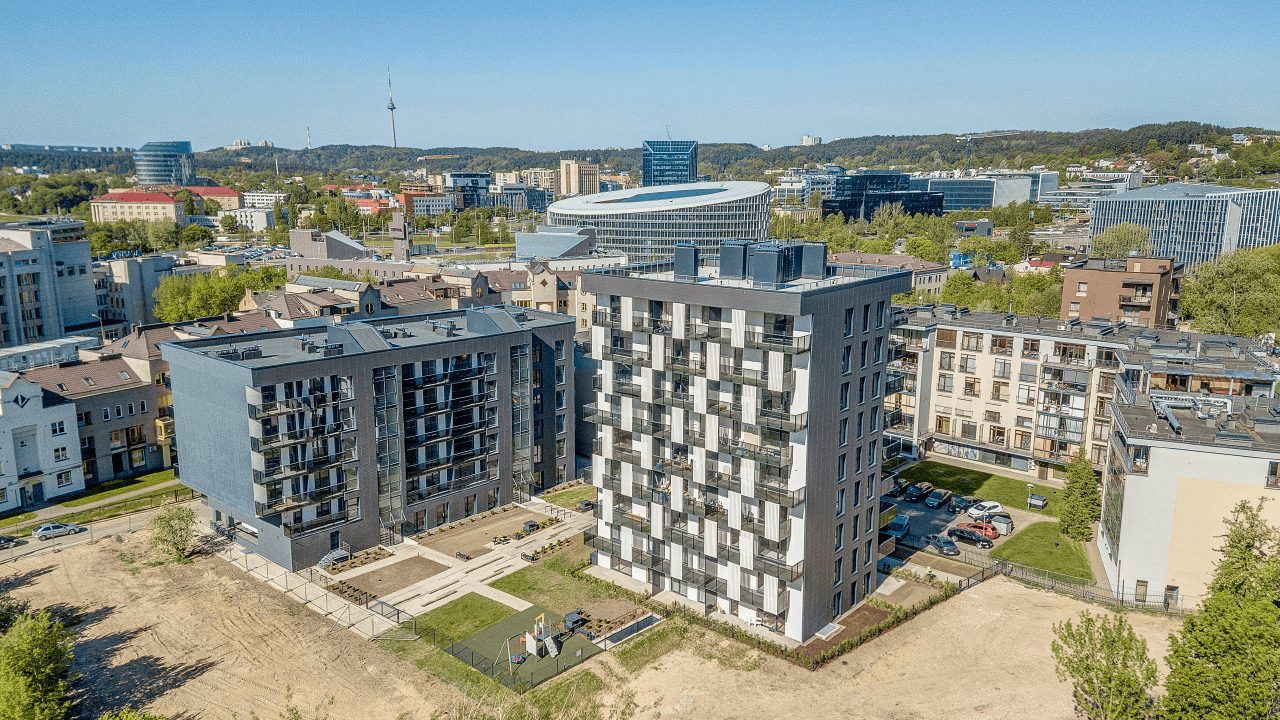Office sublease: thousands of invisible square metres
 In the office segment, the phenomenon of sublease – the transfer of part of a company’s leased premises to a third party – became popular during the pandemic and has remained since. The market of subleased property is usually not included in the official statistics published by real estate agencies. According to OBER-HAUS, current tenants of Class A and Class B+ business centres in Vilnius alone could be offering several thousand or even tens of thousands of square metres of space for sublease.
In the office segment, the phenomenon of sublease – the transfer of part of a company’s leased premises to a third party – became popular during the pandemic and has remained since. The market of subleased property is usually not included in the official statistics published by real estate agencies. According to OBER-HAUS, current tenants of Class A and Class B+ business centres in Vilnius alone could be offering several thousand or even tens of thousands of square metres of space for sublease.
Sublease is usually simply understood as renting space not directly from the owner or manager of a business centre, but from an existing tenant established and operating in the business centre. The principle of sublease itself existed long before the pandemic, but has only become more popular in recent years as businesses switched to remote or hybrid work, consequently, the amount of space required for their operations has decreased.
OBER-HAUS estimates that since the beginning of the pandemic, the average office space in Vilnius has decreased by about 30%. In other words, companies entering into new contracts today are renting office space by almost a third smaller than a few years ago. However, office lease contracts are usually long-term and companies have invested considerable amounts in fitting out the leased offices, so subleasing part of the space is an attractive option of using the space that has for various reasons become available. This is particularly relevant when the existing lease agreement does not allow the company to surrender part of its space without incurring a penalty.
Sublease has its advantages and disadvantages for each of the parties. Subleasing part of the premises allows the existing tenants to reduce the financial burden of the unused space, either fully or partially. On the other hand, some companies deliberately lease surplus space as a reserve for future expansion and then sublease part of the space temporarily in the first year. Among sublessors, there are also medium-sized and large, well-known companies that have failed to expand or postponed their expansion and recruitment plans. The only disadvantage of sublease for the sublessor may be the fact that the common areas of the office can be used by people who are not part of the company, yet this challenge is solved by simple interior redesign solutions.
From a subtenant’s perspective, the biggest advantages of sublease are fully furnished premises in attractive business centres, the possibility of moving in very quickly and flexible lease terms. Sublease options are readily available to companies looking for a shorter lease term or a fully furnished office. Sublease is also of interest to businesses that have a strategic need to be located in a particular business centre, but the business centre cannot offer free space. Finally, some businesses choose sublease as a trial period before renting larger premises directly or renting premises for a temporary project or a team. But these options contain disadvantages: such premises are usually leased for a short period of time – a few months or a few years – and it will usually be impossible to adapt the furnished premises to their needs.
The price factor in the sublease market has no clear rules. On the one hand, a subleased space is usually fully furnished, so the subtenant can move straight in, but this is factored into the higher price per square metre. Also, the flexibility of sublease and shorter terms tend to push the price upwards. On the other hand, the financial burden of unused space and the possible penalties for the existing tenant may force the tenant to sublease the available space at a rate below market prices. Each sublease case is therefore individual, but flexible and optimal arrangements are certainly possible in the market.
Sublease is generally tolerated and not opposed to by managers or owners of business centres. Although many standard lease agreements stipulate that sublease is only allowed with the manager’s approval, in practice the approval is usually obtained if the interested party meets the owner’s requirements. Managers of business centres have a clear motivation for this as sublease helps to maintain planned income streams and there is always the possibility that the subtenant will become a direct and long-term tenant in the future.
Sublease is referred to as a ‘hidden vacancy’ by property market participants – its official size is not disclosed. Offices are offered for sublease in the same way as offices for lease in the primary market, but usually through specialist brokers, not publicly. Currently, the official vacancy rate in the primary office market in Vilnius is around 8%: 6% in Class A and 9% in Class B business centres. Rents, excluding VAT, in Class A business centres today range from 16.5 to 20 EUR/sqm and in Class B business centres – from 13 to 15 EUR/sqm. Vacancy at the rate of 8% in Vilnius today would mean about 86,000 sqm of office space available for rent on the primary market, but this figure does not include the subleased office space market, which, according to various estimates, may stand at 10,000 sqm or even more. Moreover, not every company has yet considered the possibility of subletting part of its premises, so this market certainly still has a huge reserve.
Far from being a grey or shadow market, its growth is simply an illustration of the changes taking place in business across the world, for which property developers will eventually offer sustainable solutions. So far, sublease has remained a significant niche market, harder to see with the naked eye, but which can create flexibility for both tenants and landlords.
Latest news
 All news
All news

Ober-Haus completes the sale of…
A. Juozapavičiaus Street, Kaunas, the last apartment in the project…

In 2024, annual apartment price…
The Ober-Haus Lithuanian apartment price index (OHBI), which follows changes…

Up to two times the…
“As the level of house prices has been rising slowly…
 All news
All news